Frontline: Top Secret America by Info4uAndMe
THE POLITICAL TEST LABORATORY OF BRITISH OCCUPIED IRELAND
The Guineapigs
The Guineapigs were fourteen Irish political prisoners on whom the British Army experimented with sensory deprivation torture in 1971. It still continues 40 years later, on Marian Price who is experimented on, in a British military Hospital in Belfast today after her sister Dolours died as a result of drug experiments carried out on her while being forced fed 40 years ago. These 'techniques' were outlawed, following Britain's conviction at the International Court of Human Rights at Strasbourg, but were exported by SS UK and used by their WASPs in the USA.
In Ireland in 1971, there was a deliberate and careful use of modern torture techniques, not just to get information but to perfect the SS UK system of Sensory Deprivation for use against civilians. An ex-internee John McGuffin spent two years researching a book he wrote, following his release from where he had been held without charge or trial. The book called 'The Guineapigs" was dedicated to the blanket men in Long Kesh concentration camp and the women political prisoners in Armagh jail. 'Na reabhloidi Abu.'
The CIA operates under orders from British
intelligence and was created by British intelligence
in 1947. The CIA today is still loyal to the
international bankers based in the city of London
and the global elite aristocratic families like the
Rothschild’s and the Windsor’s. Since it was first
started, MI6 has always brought drugs into Britain.
They do not bring ‘some’ of the drugs into Britain but
I would estimate MI6 bring in around ninety
percent of the drugs in. They do this by pulling the
strings of many organised crime and terrorist
groups and these groups like the IRA are full of MI6
agents... James Casbolt
Web: http://www.jamescasbolt.com
[2006] Underground Bases, Missing Children and Extra-Terrestrials By James Casbolt,
[2006] Global drug trade is controlled and run by the intelligence agencies by James Casbolt
Clones, bio-plasmics and world leaders by James Casbolt
Friends and Star Kids
http://www.movie3mai.net/dnKLolaw3Pe4.html
[2006] Whistleblower dies in suspicious circumstances on stage at UFO conference
BookAgent Buried Alive, The Autobiography of Commander James Casbolt (2008)
intelligence and was created by British intelligence
in 1947. The CIA today is still loyal to the
international bankers based in the city of London
and the global elite aristocratic families like the
Rothschild’s and the Windsor’s. Since it was first
started, MI6 has always brought drugs into Britain.
They do not bring ‘some’ of the drugs into Britain but
I would estimate MI6 bring in around ninety
percent of the drugs in. They do this by pulling the
strings of many organised crime and terrorist
groups and these groups like the IRA are full of MI6
agents... James Casbolt
Web: http://www.jamescasbolt.com
[2006] Global drug trade is controlled and run by the intelligence agencies by James Casbolt
Clones, bio-plasmics and world leaders by James Casbolt
Friends and Star Kids
http://www.movie3mai.net/dnKLolaw3Pe4.html
[2006] Whistleblower dies in suspicious circumstances on stage at UFO conference
BookAgent Buried Alive, The Autobiography of Commander James Casbolt (2008)
It may be a revelation to many people that the global drug trade is controlled and run by the intelligence agencies. In this global drug trade British intelligence reigns supreme. As intelligence insiders know MI5 and MI6 control many of the other intelligence agencies in the world (CIA, MOSSAD etc) in a vast web of intrigue and corruption that has its global power base in the city of London, the square mile. My name is James Casbolt, and I worked for MI6 in ‘black ops’ cocaine trafficking with the IRA and MOSSAD in London and Brighton between 1995 and 1999. My father Peter Casbolt was also MI6 and worked with the CIA and mafia in Rome, trafficking cocaine into Britain. My experience was that the distinctions of all these groups became blurred until in the end we were all one international group working together for the same goals. We were puppets who had our strings pulled by global puppet masters based in the city of London. Most levels of the intelligence agencies are not loyal to the people of the country they are based in and see themselves as ‘super national’.
It had been proved beyond a shadow of a doubt that the CIA has been bringing in most of the drugs into America for the last fifty years (see ex LAPD officer Michael Rupert’s ‘From the wilderness’ website for proof). The CIA operates under orders from British intelligence and was created by British intelligence in 1947. The CIA today is still loyal to the international bankers based in the city of London and the global elite aristocratic families like the Rothschild’s and the Windsor’s. Since it was first started, MI6 has always brought drugs into Britain. They do not bring ‘some’ of the drugs into Britain but I would estimate MI6 bring in around ninety percent of the drugs in. They do this by pulling the strings of many organised crime and terrorist groups and these groups like the IRA are full of MI6 agents.
MI6 bring in heroin from the middle east, cocaine from south America and cannabis from morocco as well as other places. British intelligence also designed and created the drug LSD in the 1950′s through places like the Tavistock Institute in London. By the 1960′s MI5, MI6 and the CIA were using LSD as a weapon against the angry protestors of the sixties and turned them into ‘flower children’ who were too tripped out to organise a revolution.
Dr Timothy Leary the LSD guru of the sixties was a CIA puppet. Funds and drugs for Leary’s research came from the CIA and Leary says that Cord Meyer, the CIA agent in charge of funding the sixties LSD counter culture has ”helped me to understand my political cultural role more clearly”. In 1998, I was sent 3000 LSD doses on blotting paper by MI5 with pictures of the European union flag on them. The MI5 man who sent them told my father this was a government ‘signature’ and this LSD was called ‘Europa’.
This global drugs trade controlled by British intelligence is worth at least 500 billion a year. This is more than the global oil trade and the economy in Britain and America is totally dependent on this drug money. Mafia crime boss John Gotti exposed the situation when asked in court if he was involved in drug trafficking. He replied “No we can’t compete with the government”. I believe this was only a half truth because the mafia and the CIA are the same group at the upper levels. In Britain, the MI6 drug money is laundered through the Bank of England, Barclays Bank and other household name companies. The drug money is passed from account to account until its origins are lost in a huge web of transactions. The drug money comes out ‘cleaner’ but not totally clean. Diamonds are then bought with this money from the corrupt diamond business families like the Oppenheimers. These diamonds are then sold and the drug money is clean. MI6 and the CIA are also responsible for the crack cocaine epidemic in Britain and America. In 1978, MI6 and the CIA were in south America researching the effects of the natives smoking ‘basuco’ cocaine paste. This has the same effect as crack cocaine. They saw that the strength and addiction potential was far greater than ordinary cocaine and created crack cocaine from the basuco formula. MI6 and the CIA then flooded Britain and America with crack [see Gary Webb--ed]. Two years later, in 1980, Britain and America were starting to see the first signs of the crack cocaine epidemic on the streets. On august 23, 1987, in a rural community south of Little Rock in America, two teenage boys named Kevin Ives and Don Henry were murdered and dismembered after witnessing a CIA cocaine drop that was part of a CIA drug trafficking operation based at a small airport in Mena, Arkansas. Bill Clinton was the governor of Arkansas at the time. Bill Clinton was involved with the CIA at this time and $100 million worth of cocaine was coming through the Mena, Arkansas airport each month. For proofsee the books ‘Compromise’ and ‘Dope Inc’.
On my father’s international MI6 drug runs, whatever fell off the back of the lorry so to speak he would keep and we would sell it in Britain. As long as my father was meeting the speedboats from Morocco in the Costa del Sol and then moving the lorry loads of cannabis through their MI6, IRA lorry business into Britain every month, British intelligence were happy. As long as my father was moving shipments of cocaine out of Rome every month, MI5 and MI6 were happy. If my father kept a bit to sell himself no one cared because there was enough drugs and money to go round in this £500 billion a year global drugs trade. The ones who were really paying were the people addicted. Who were paying with suffering. But karma always catches up and both myself and my father became addicted to heroin in later years and my father died addicted, and poor in prison under very strange circumstances. Today, I am clean and drug-free and wish to help stop the untold suffering this global drugs trade causes. The intelligence agencies have always used addictive drugs as a weapon against the masses to bring in their long term plan for a one world government, a one world police force designed to be NATO and a micro chipped population known as the New World Order. As the population is in a drug or alcohol-induced trance watching ‘Coronation Street’, the new world order is being crept in behind them.
To properly expose this global intelligence run drugs trade we need to expose the key players in this area:
1- Tibor Rosenbaum, a MOSSAD agent and head of the Geneva based Banque du Credit international. This bank was the forerunner to the notorious Bank of Credit and Commerce international (BCCI) which is a major intelligence drug money laundering bank. ‘Life’ magazine exposed Rosenbaum’s bank as a money launderer for the Meyer Lanksky American organised crime family and Tibor Rosenbaum funded and supported ‘Permindex’ the MI6 assassination unit which
was at the heart of the John F. Kennedy assassination.
was at the heart of the John F. Kennedy assassination.
2- Robert Vesco, sponsored by the Swiss branch of the Rothchilds and part of the American connection to the Medellin drug cartel in Columbia.
3- Sir Francis de Guingand, former head of British intelligence, now living in south Africa (and every head of MI5 and MI6 has been involved in the drug world before and after him).
4- Henry Keswick, chairman of Jardine Matheson which is one of the biggest drug trafficking operations in the world. His brother John Keswick is chairman of the bank of England.
5- Sir Martin Wakefield Jacomb, Bank of England director from 1987 to 1995, Barclays Bank Deputy Chairman in 1985, Telegraph newspapers director in 1986 ( This is the reason why this can of worms doesn’t get out in the mainstream media. The people who are perpetrating these crimes control most of the mainstream media. In America former director of the CIA William Casey was, before his death in 1987, head of the council of the media network ABC. Many insiders refer to ABC as ‘The CIA network.)
6- George Bush, Snr, former President and former head of the CIA and America’s leading drug baron who has fronted more wars on drugs than any other president. Which in reality is just a method to eliminate competition. A whole book could be written on George Bush’s involvement in the global drug trade but it is well-covered in the book ‘Dark Alliance’ by investigative journalist Gary Webb.
Gary Webb was found dead with two gunshot wounds to the back of his head with a revolver. The case was declared a ‘suicide’. You figure that out. Gary Webb as well as myself and other investigators, found that much of this ‘black ops’ drug money is being used to fund projects classified ab ove top secret. These projects include the building and maintaining of deep level underground bases in Dulce in New Mexico, Pine gap in Australia, Snowy mountains in Australia, The Nyala range in Africa, west of Kindu in Africa, next to the Libyan border in Egypt, Mount Blanc in Switzerland, Narvik in Scandinavia, Gottland island in Sweden and many other places around the world (more about these underground bases in my next issue). The information on this global drugs trade run by the intelligence agencies desperately needs to get out on a large scale. Any information, comments or feedback to help me with my work would be greatly welcomed.


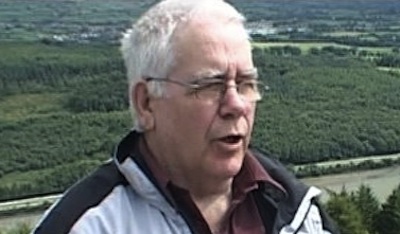
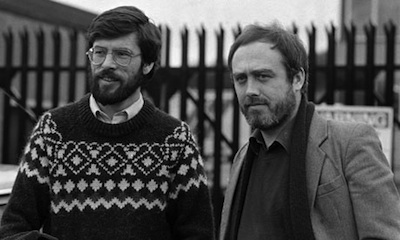
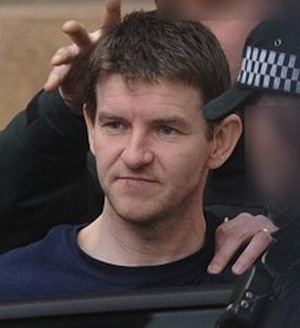
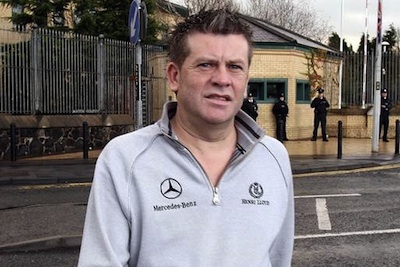
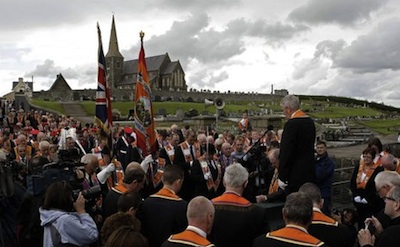 A decision to allow the anti-Catholic Orange Order to gather in a public park surrounded by Catholic homes in Portadown has been described as ‘an act of unionist political madness’ by the Garvaghy Road Residents Coalition (GRRC).
A decision to allow the anti-Catholic Orange Order to gather in a public park surrounded by Catholic homes in Portadown has been described as ‘an act of unionist political madness’ by the Garvaghy Road Residents Coalition (GRRC).